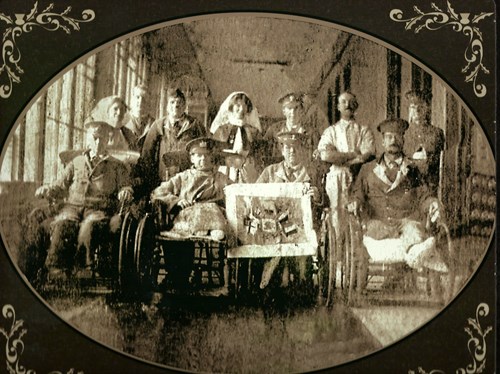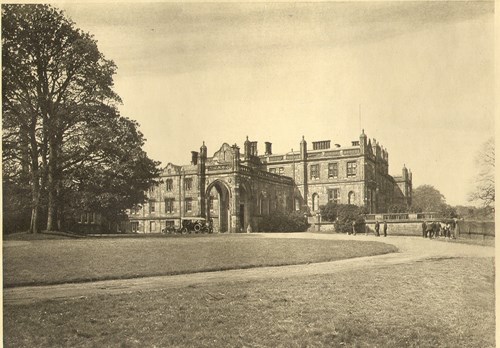Back to news
10th October 2021
Who was Erskine’s very first patient? According to the admissions book for what was then “The Princess Louise Scottish Hospital for Maimed and Limbless Sailors and Soldiers”, it was Corporal J Ritson of the 1/5th Royal Scots Fusiliers, a 29-year-old rigger from Troon in Ayrshire.
In fact, 14 patients were admitted to the hospital on that day, October 10, 1916 but Jimmy Ritson has the honour being first in the huge admissions book, a tome that would last into the 1930s. The original of which can be viewed in the Archives of The University of Glasgow.

In 1914 at the outbreak of war, Ritson volunteered for his local territorial regiment, the Royal Scots Fusiliers, just four days after Britain’s declaration of war. Jimmy and his battalion left Liverpool for Gallipoli in May 1915, and landed in Gallipoli on June 7 in the very thick of the action.
On July 13 an officer of the 7th Highland Light Infantry fell in front of the trenches, “Corporal Ritson rushed out and picked him up and carried him back over three of the trenches which they had taken from the enemy and brought him into safety”. This gallantry would earn him the Distinguished Conduct Medal, second in importance only to the Victoria Cross.
“A great number of my comrades fell at Gallipoli and will never return, so that it may be said that I have been fortunate in emerging from such an ordeal with only the loss of my left hand.” Corporal James Ritson on receiving the Distinguished Conduct Medal with Bar, 1 September 1916
On December 19 he was mentioned in dispatches for leading a bombing party that took a communications trench without the loss of a single man. Ten days later he was in action again, taking 20 prisoners and leading an attack on an enemy trench. This action would earn Jimmy Ritson a second DCM, in the form of a Bar.
However, the following day a Turkish mine exploded in Ritson’s bombing pit. Everyone was injured or killed and Ritson was buried alive for some time. It was reported: “Corporal Ritson was buried in the debris and had to be dug out, when it was found that he had twenty-two wounds in his body. One of these proved to be so serious that he had to have his left hand amputated.” It is hard to believe that any human being could survive such injuries.
Jimmy himself spoke little afterwards of how he survived what must have been months of torment, except to recall that immediately after the amputation, his stump was cauterized by being plunged into a bucket of hot tar.
On October 10, Jimmy Ritson became Erskine’s first official patient.
Just over a month after he entered Marr Hall, James Ritson was back with his family and getting on with life. In November he was “honourably discharged” from the army as “unfit for further military service” and provided with a reference which described him as “an honest, sober and willing soldier, who has always been found attentive to duty. Military character – very good”.
However, like so many survivors of the horrors of the First World War, he had difficulty reintegrating into civilian life. Jimmy continued to be honoured for his war service.
After the war he was awarded the beautiful gold and blue Troon Medal and Freedom of the Burgh in recognition of his gallantry.
Today on the anniversary of him being Erskine’s very first patient in 1916 we are proud to remember such an extraordinarily courageous man.
